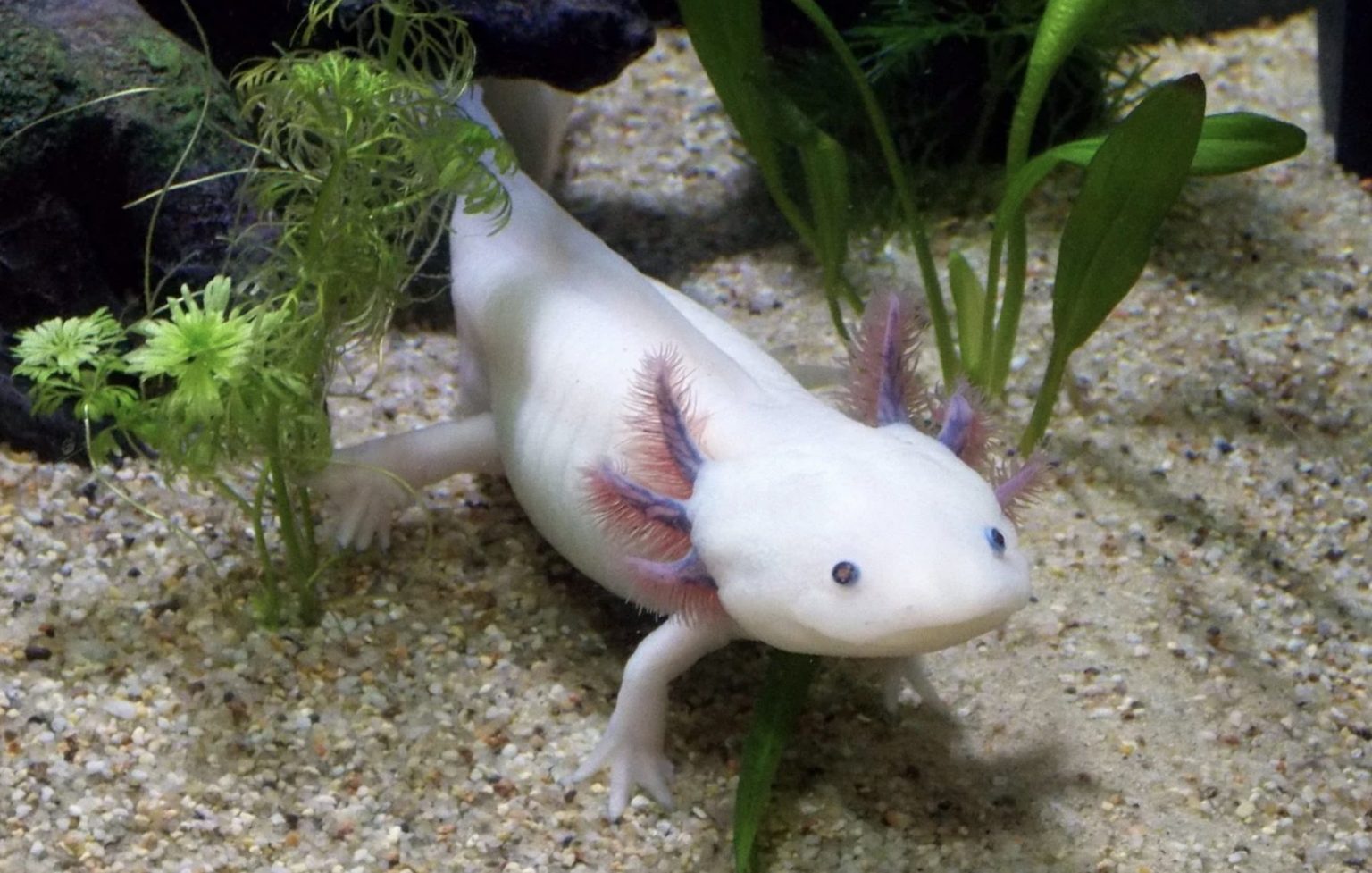The axolotl is one of the world’s only neotenic animals, but its perpetual adolescence won’t help it if it goes extinct in its only major wild habitat.
That’s the situation in heavily used Lake Xochimilco, where agriculture and climate change have pushed the distinctive amphibian to the brink. And now, plans to resuscitate the axolotl’s (Ambystoma mexicanum) wild population also revolve around human intervention.
The practical outlook for the amphibians may be grim — but a bizarre cocktail of pop culture magic and exploratory wildlife management techniques could intervene.
Revered but ignored
The “Mexican Walking Fish” once thrived in several lakes across the Mexico Valley, according to Earthday.org. But as thirsty urban developments crowded around its habitats, lakes disappeared and pollution increased.
Mexican culture has venerated the axolotl to a high degree — it’s on the 50 peso note — but the loss of the actual species could be imminent. The animals eventually lived only in Lake Xochimilco, a UNESCO World Heritage Site that has shrunk significantly under human influence.
Xochimilco is the last remnant of a vast complex of water bodies in the region. And following extensive programs to drain the surrounding system and Xochimilco itself to reduce flooding, polluted and overburdened canals are all that’s left.
View this post on Instagram
Axolotls still densely populated these channels as recently as the 1990s, when studies discovered thousands of the tiny animals per square kilometer of the lake. Most recent numbers indicate only about 36 axolotls per square km, NPR reported.
That’s a stark figure, especially when you consider the salamanders’ exceptional reproductive and regenerative capabilities. Pregnant females can lay anywhere from 300-1,000 eggs per clutch. Once they’re born, they differ from other salamanders, never undergoing metamorphosis. Instead, axolotls remain in a perpetual larval state, a phenomenon called neoteny. They also readily regrow lost limbs and appendages, adding to the effect.
No Fountain of Youth
But Lake Xochimilco is not the fountain of youth. Agricultural activity began guiding the region’s ecology over 1,000 years ago. And while the techniques of the ancients helped create a safe haven for axolotls, modern progress has caused severe damage.
Natural springs that used to feed the systems gave way to treated wastewater. Roads and development sequestered waterways and contributed polluted runoff. Invasive tilapia and carp (introduced by humans, according to the New York Times) started gobbling up axolotl eggs.
Party boats also choke the channels.

Xochimilco in 2017. Photo: pontla via Flickr
However, creative conservation efforts along with the animal’s meteoric popularity could save the day. While the axolotl plays an endemic role in interior Mexican culture, the rest of the world recently caught up, thanks in part to social media and Minecraft, where the axolotl gives players regenerative abilities.
One conservationist is trying to ride that thermal as he seeks to save the species. Luis Zambrano is an ecologist at the National Autonomous University of Mexico. After spending almost a decade in service to the axolotl, he and his teams have enjoyed recent breakthroughs.
They secured backing from a major conservation group for their newest axolotl rescue plan: creating shelters for the animals within what’s left of Lake Xochimilco, then stimulating a resurgence of ancient agricultural methods.
Farming along the Xochimilco takes shape in chinampas, Aztec structures that function as hydroponic islands.
View this post on Instagram
An old-fashioned approach
The refuges can either be simple, submerged cages or naturally irrigated structures protected by volcanic rock and native plants, the NYT reported. Its depiction of one such sanctuary was frank: a “ditch” that took five years to complete. However, the local farmer who built it appeared resolute.
“These are small steps, right?” said Javier del Valle, a Náhuatl speaker and a fourth generation Xochimilco farmer. “But it is a very titanic task. It’s about returning to a certain knowledge, a certain time.”
To help pay for the work, you can “adopt” an axolotl through the National Autonomous University.
View this post on Instagram
Zambrano, the ecologist, hopes to cultivate properties like del Valle’s and then connect them throughout the region. In comments to NPR, he sounded confident in the techniques but struck a realistic chord.
“We know what to do. We know where to do it. And we know that if we do that in those places, we will have a healthy population of axolotls,” Zambrano said. “But if society doesn’t care too much, it doesn’t matter what we know. It will go extinct.”





